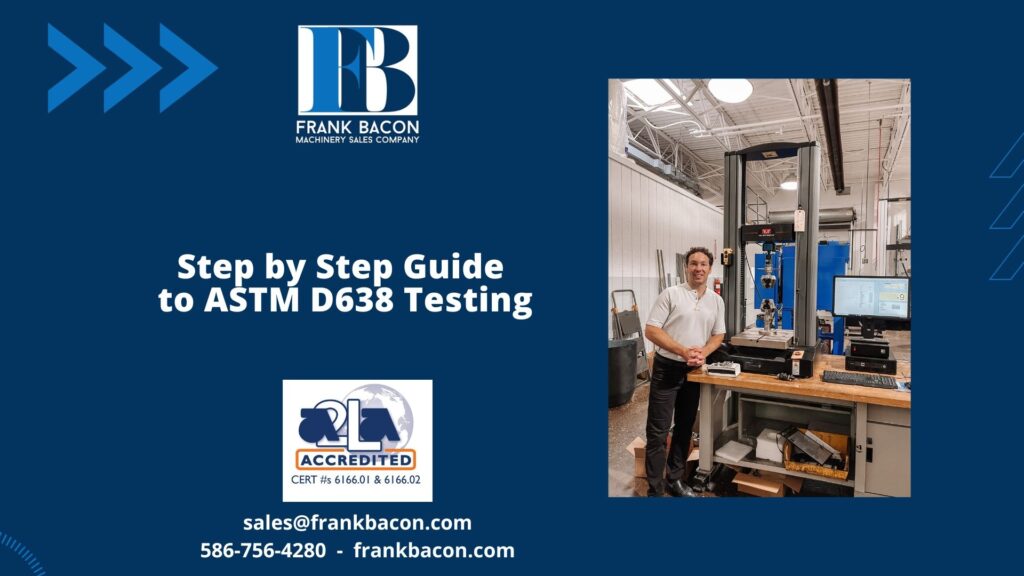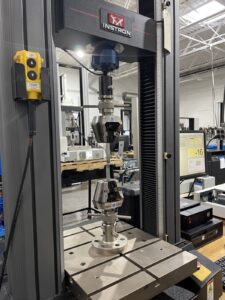Step by Step Guide to ASTM D638 Testing

If you’re an engineer, or work with plastics in anyway chances are you’ve heard of ASTM D638 testing. But what exactly is ASTM D638 and why should engineers be aware of it? ASTM D638 testing is a method for determining the tensile strength of materials, more specifically plastics. Understanding its nuances will help engineers ensure the safety and reliability of their products. Let’s take a closer look at this important test.
ASTM D638 is an international standard for testing the tensile strength of plastic materials. It measures the material’s ability to resist forces that could tear or deform it, which in turn impacts its structural integrity. The test typically takes around 5 minutes and requires access to a universal testing machine (UTM). In order to perform the test, engineers must first prepare a sample by cutting it into two pieces according to strict guidelines outlined in section 6 of the ASTM standard. Once prepared, the sample is then subjected to forces in both tension and compression using the UTM until it breaks or deforms significantly. From there, data such as ultimate tensile strength (UTS), yield strength (YS), and elongation at break (%) can be determined.
It is important to be aware of environmental conditions when performing this type of test as they can have an impact on your results. For instance, if your samples are stored in humid conditions prior to testing they may experience changes in moisture content which can affect their mechanical properties like stiffness or flexibility. This means that if you plan on performing ASTM D638 tests make sure you take some extra time to consider potential environmental effects on your materials!
Step One – Understand What ASTM D638 Is All About
Before you jump into running an ASTM D638 test, make sure you understand what it is and why it exists in the first place. The acronym stands for American Society for Testing and Materials (ASTM) Standard Test Method for Tensile Properties of Plastics. It’s a standard method used to measure the tensile properties of plastics by stretching them until they break—hence the name “tensile properties.” This includes measuring how much force (or tension) is needed to break or deform a plastic sample as well as its characteristics before and after breaking. As such, this test can be used to compare different plastics or plastics made from different processes or mixtures.
Step Two – Gather Your Materials
Next up is gathering your materials for the test itself. You’ll need some kind of testing machine that can apply a controlled amount of force on your plastic sample as well as other tools like calipers, rulers, thermometers, scales, etc. Depending on your specific needs, you may also need specialty equipment such as extensometers or fixtures that allow you to position your sample correctly before testing begins. Once everything’s in place, move on to step three!
Step Three – Prepare Your Sample
Before you start running tests on anything, make sure your specimen is ready to go! That means inspecting it carefully for any defects and irregularities that could affect accuracy or repeatability during testing. This includes looking for any signs of contamination or damage that could impact results down the line as well as making sure your sample meets all relevant dimensional requirements according to standard specifications outlined in ASTM D638-16a/D638-16aR2045E3 . With this out of the way…it’s time for testing!
Step Four – Run Your Test
Now we get into the fun stuff—actually running our tests! Depending on the type of material being tested (and what information you’re hoping to gain from it), there are several different types of tests outlined in ASTM D638-16a/D638-16aR2045E3 that can be performed here including tensile strength tests , elongation at break tests , Young Modulus tests , etc. Once your data has been collected (make sure you record everything!), move on to analyzing each result against applicable standards outlined in ASTM D638-16a/D638-16aR2045E3 . Doing so will help determine if any further action needs to be taken with regards to improving products or processes related to each material tested. And with that….congratulations! You’ve successfully completed an ASTM D638 test!
Running an ASTM D638 test doesn’t have to be intimidating if you know what steps are involved, have the correct tools, and are prepared! From properly preparing samples and gathering materials beforehand all the way through analyzing results afterwards, ASTM D638 tests can be completed effectively. Happy testing!
Frank Bacon Machinery has the machinery and tools necessary to run ASTM D638 and other ASTM tests effectively. Contact us today to for your testing solutions!
Check out this Frank Bacon ASTMD638 video!



